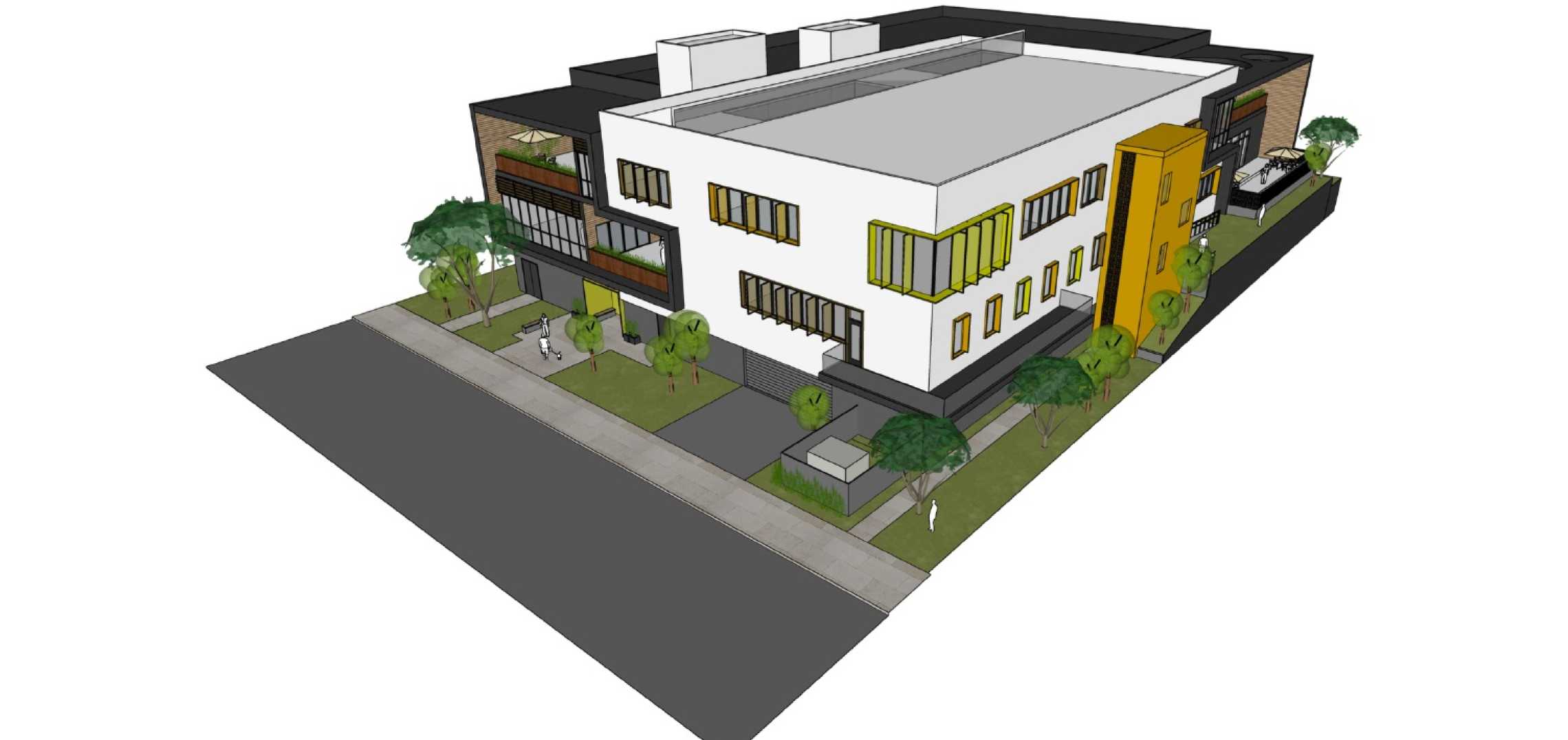Los Angeles County’s plan to build a 167-bed homeless shelter at the West LA National Guard Armory is facing intense scrutiny from a vocal group of opponents who claim the project is too large, improperly located, or legally dubious. But supporters say the opposition fits a familiar Westside pattern, where every proposed solution to homelessness is met with new objections, shifting arguments, and procedural roadblocks designed to kill projects without ever having to say “we don’t want poor people here.”
The proposed shelter, located at 1300 Federal Avenue just south of Wilshire, would convert part of the armory site (which is currently a surface parking lot) into a year-round facility with 24/7 access, 167 interim housing beds, on-site services, and case management. Funded by $32.7 million in federal American Rescue Plan dollars, the project is being led by the County’s Department of Health Services. It is intended to replace the winter-only shelter that operated seasonally in the armory for years and to help fill a severe gap in interim housing on the Westside, where the vast majority of the unhoused population sleeps outdoors and shelter capacity is among the lowest in the county.
County officials say the site was chosen because it’s government-owned, underutilized, and already used for shelter in the past. But opponents have rallied around a different argument: that the land is legally restricted to veteran-only uses due to a 19th-century deed known as the Bandini-Jones covenant. Although federal authorities have already conditionally approved the County’s plan, opponents claim the covenant forbids the shelter because it will also serve non-veterans.
“There’s this manufactured sense of scarcity, pitting two very vulnerable and overlapping groups against each other—veterans and the general homeless population,” said Malcolm, a Sawtelle resident who lives nearby and attended the recent neighborhood council meeting where the project was debated. “But the site is literally a parking lot. The idea that it’s somehow displacing veterans just doesn’t hold water.” Malcolm, who began walking through the adjacent VA campus during the pandemic, described it as “a massive, underused facility” and questioned how a new building on its edge could be framed as taking anything away.
At the meeting, critics argued that the project’s “low-barrier” model, meaning it won’t require sobriety or participation in treatment programs—would attract individuals with untreated mental illness or addiction issues. Others objected to the lack of a curfew or claimed the facility resembled a prison. But project supporters push back on the notion that a “low-barrier” shelter equates to lawlessness. Low-barrier does not mean no rules, they note. Residents at the Armory shelter would be subject to a code of conduct and would be supported by case managers, nurses, and security staff. The idea is simply to remove unnecessary barriers (like sobriety requirements) that often prevent people from entering shelters. The staff cited data that low-barrier “Housing First” approaches have higher success in getting people indoors and on a path to stability. Moreover, the shelter’s design, which has separate wings for men and women, on-site amenities, and outdoor courtyards, is intended to create a contained community where clients have their needs met on-site, reducing the likelihood of wandering or disturbances outside. When County staff and service providers attempted to explain the operations plan at the Sawtelle meeting, they were repeatedly interrupted by a handful of attendees who accused them of lying, prompting the meeting to spiral into disorder.
Opponents also claimed they had been “blindsided” by the project, despite the fact that it has been under development for years. Initial steps toward the project began around 2021 when the L.A. County Board of Supervisors first considered the armory site for “bridge housing.” The site was then identified as a priority for permanent interim housing during Supervisor Sheila Kuehl’s tenure, and funding was allocated through a publicly documented process as early as 2022. The project is included in the County’s American Rescue Plan dashboards, in official board motions, and in ongoing updates from the Department of Health Services and The People Concern, the nonprofit tapped to run the facility. County staff held meetings with neighborhood leaders prior to the most recent vote, and representatives from Horvath’s office have repeatedly confirmed that they are continuing public engagement.
After nearly two hours of discussion, the Sawtelle Neighborhood Council declined to adopt a resolution formally opposing the project. But it did vote to delay further action until a public town hall is held and a legal analysis of the Bandini-Jones covenant is completed. County Supervisor Lindsey Horvath, who represents the district and supports the shelter, has said her office will continue engaging with residents and ensure the project is implemented responsibly.
Still, to longtime observers of Westside politics, the objections to the Armory shelter follow a now-predictable script. Whether it’s a parking structure in Venice, a bridge housing site in Brentwood, or supportive housing in Mar Vista, the playbook rarely changes. Opponents insist they support solving homelessness in theory—but always have a reason to oppose it in practice.

